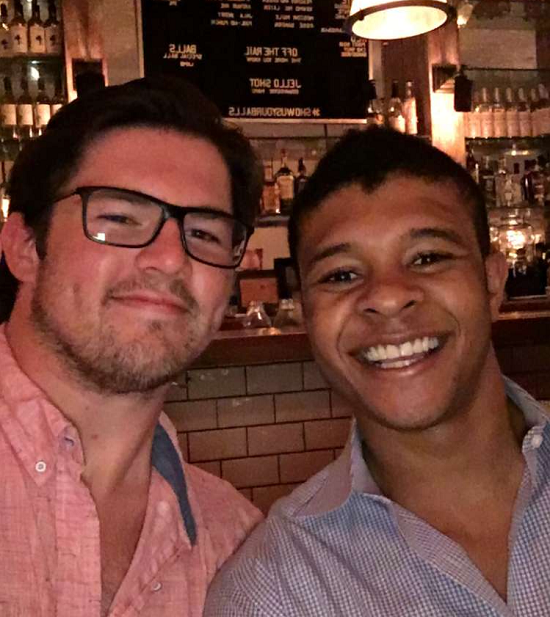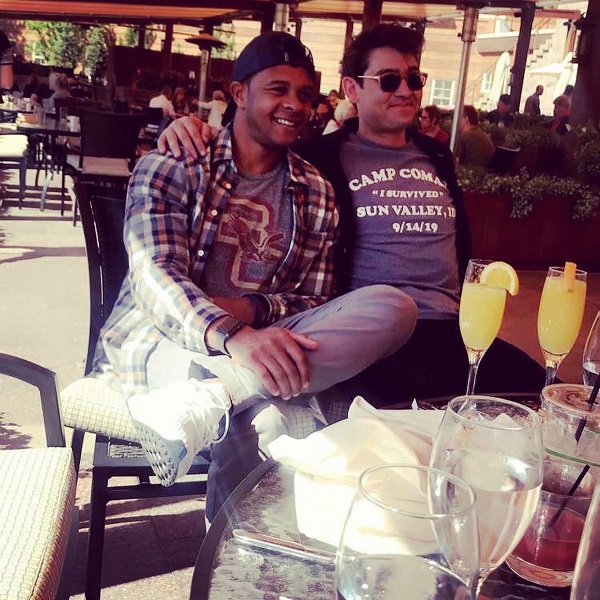
Dominick Andre had always been passionate about finance, but after landing his first job in the finance industry as an associate at J.P. Morgan, he realized it wasn’t for him. The hours were long, and he felt as though he had no opportunity to grow. While in college, he had co-founded his own mobile app company, working with a team of programmers and graphic designers to launch a word game called Apple Stacks. The game generated revenue through display ads and in-app purchases. When he finally decided to switch careers, Dominick thought back to that time. He wasn’t aware of the term ‘UX design’ at the time, but the work he’d done creating computer apps for fun required an understanding of user experience, even if he was only relying on intuition. After graduating from Springboard’s UI/UX Design Career Track, Dominick landed a role as UX designer at Fidelity Investments, where he gets to leverage his finance background together with his new design skills.
I worked in finance right out of college. I landed my first job at State Street on the client operations team. I didn’t like it much, I didn’t feel like I was growing. So I just bounced around the finance industry. I had some experience at a hedge fund, which was very interesting and I learned a lot. My most recent finance job was at J.P. Morgan before I decided to enroll at Springboard.
It was a plethora of factors. I also had an interest in tech, design, and app development. When I was in college I created a couple of apps just for fun. I didn't study computer science, but I worked on these projects on the side. My first app was a word game called Apple Stacks. Then I created a ticketing app that would let people skip long lines at their favorite bars and clubs.
Initially, I didn’t even know the term ‘user experience.’ I just knew I liked to create enjoyable experiences. If I was designing something–a game, ticketing app, or a photo app–I wanted the user to have a memorable and pleasant experience from the moment they tap on the icon to the end of their journey. I’m not artistic, I don’t paint or draw, but I can help people imagine good experiences from start to finish.

At Fidelity, I work on the digital service experience team. My team oversees money movement, which basically encompasses the transfer of assets and the processes that go with it like account creation, logging in, and all that stuff. I found my job within a month and a half after graduating from Springboard. I wanted to leverage my finance background as much as possible. I didn't want to completely jump into a brand new industry without utilizing my past experience in some capacity.
Research everything from start to finish. That's why I was able to, a) Choose Springboard relatively quickly, and; b) Find a new job. I had a checklist to make sure I was making the right decision. Find out if the program is legitimate. Do they have a history of success? Do they offer mentorship or career coaching? I spoke to at least a dozen students before applying to Springboard to make sure it was a legitimate program. Outside of Springboard, do you truly believe UX design will be a good career for you? If you have to take an entry-level position in a new field, will you make enough money?
After work I would sit down and study for 2-3 hours every night. If you are disciplined and this is something you really want and you're hungry for it, it's possible.
I was definitely hesitant, especially financially. I was investing a lot of money in myself. I knew that once I committed to the program I wouldn’t have a choice but to finish it.
But other than that, the experience was great. The curriculum was straightforward. Most importantly, the program was convenient. It was online and self-paced, but I could still have the guidance I needed.

My mentor was Sarah Pan [director of product experience design at Oracle]. I was very fortunate to have a great mentor who was experienced and enjoyed teaching me and wanted me to learn as much as I could. She gave me the guidance, skills, tools and confidence that I needed to really get through it. I know the minimum requirement is to have a mentor call once a week, but I generally had access to my mentor 24/7, which I thought was just incredible.
I chose Springboard because I knew I was going to graduate with a full-fledged portfolio. Even if I didn't land a job right away, I would have something to show for other than a certificate of completion. These were real-world projects that had been reviewed by an industry expert. It was a great experience having a mentor and career coach and having people tell you step by step what you need to do to get a job. So I took their advice and I tried to exceed their expectations. If Springboard wanted me to apply to, say, four jobs a week, I would double or triple it, depending on how I was feeling. No one can teach you to have that drive; you have to want it for yourself.
My favorite project is an app called Gram City, which alerts you to the most Instagrammable locations near you within a certain radius of your location. Whether it’s graffiti, wall murals, waterfalls, or bridges, the app will pinpoint the location of these things based on where you are. You can set preferences for specific objects you’re looking for, such as sculptures or street art. I started by taking some photos of the city of Boston and I made a prototype of what it would be like to use the app as a tourist in Boston. I used the hosting platform, Marvel, which expedites the prototyping process. Working on this project gave me a different perspective of finishing a project from A and B, so I really, really enjoyed it.
I worked with a real estate investing startup called Bitprops. It’s a platform that lets people form real estate syndicates, so if you find a property you want to invest in but you don’t have the capital, this platform lets you raise money with other like-minded investors. I worked with the founder alongside three other Springboard students. I enjoyed this project the most because I felt like I was an actual designer working on a team. My current employer also asked about the project during my interviews.
Their website was in the alpha testing phase and it was very bare-bones. We helped improve the designs for the property listings. When you click on a property, it shows you details such as how many investors are currently in the deal, when it expires, and how much money they've raised. There wasn’t much of a layout or any design elements. So we organized the information to make it more consumable.
It would be a tie between the mentorship and the alumni network. Having a mentor with you every step of the way who could give you real feedback was incredible. There were definitely times when I felt like my work was well-polished and made sense from a UX perspective and I felt really confident about it. Then my mentor would give me 10 markups to show things that were confusing, or ask why I made a certain design choice. You need someone who will tell it like it is even when it’s not always pleasant.
If I were to give any tips to prospective students, I would say Springboard is realistic. You can literally change your career and your life within nine months to a year. This is coming from someone who literally did it. Before Springboard, I was in a bad place. I didn't think my job was fulfilling. I needed to find something new that would excite me. Springboard checked every item on my list, including the guidance and mentorship.





